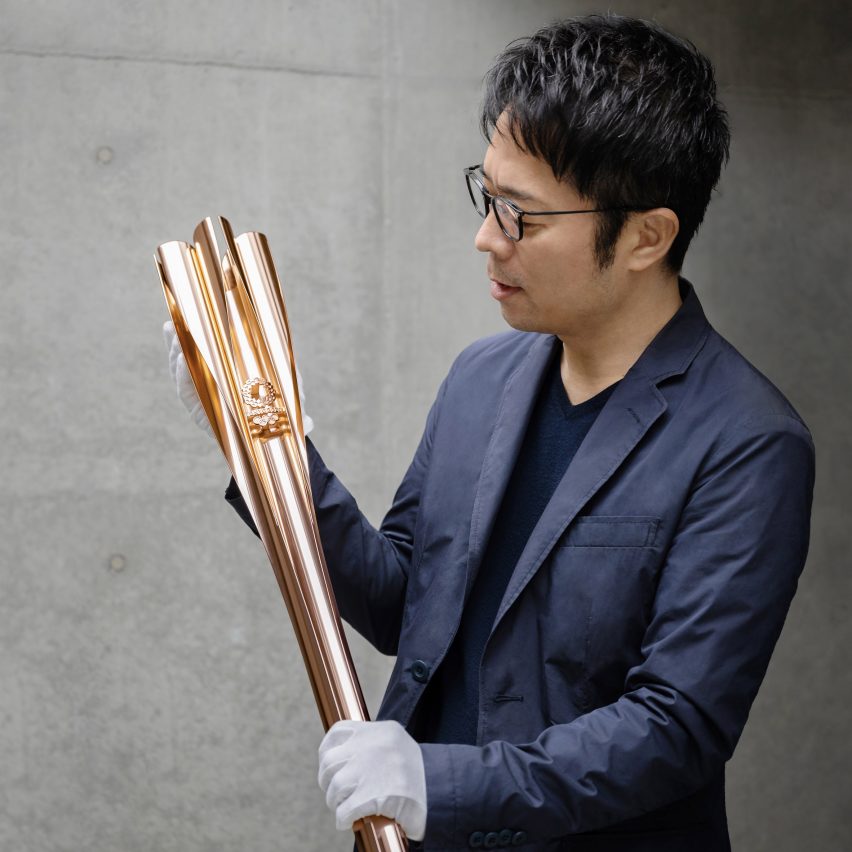
Japanese designer Tokujin Yoshioka has revealed new details of the Tokyo Olympics 2020 torch, as the country prepares for the games this summer.
The head of the 71-centimetre rose-gold torch gradually opens into five sections to resemble the petals of the sakura flower – the national flower of Japan.
Yoshioka used an aluminium extrusion technique to make the torch. He said this allows it to be strong and lightweight, and "form a single and seamless sculpture-like piece".
"Part of the reason [for aluminium extrusion] was because I wanted to keep the design simple for the structure as well," Yoshioka added.
"It's not a superficial garnish that creates a beautiful design; the key is always a beautiful structure."
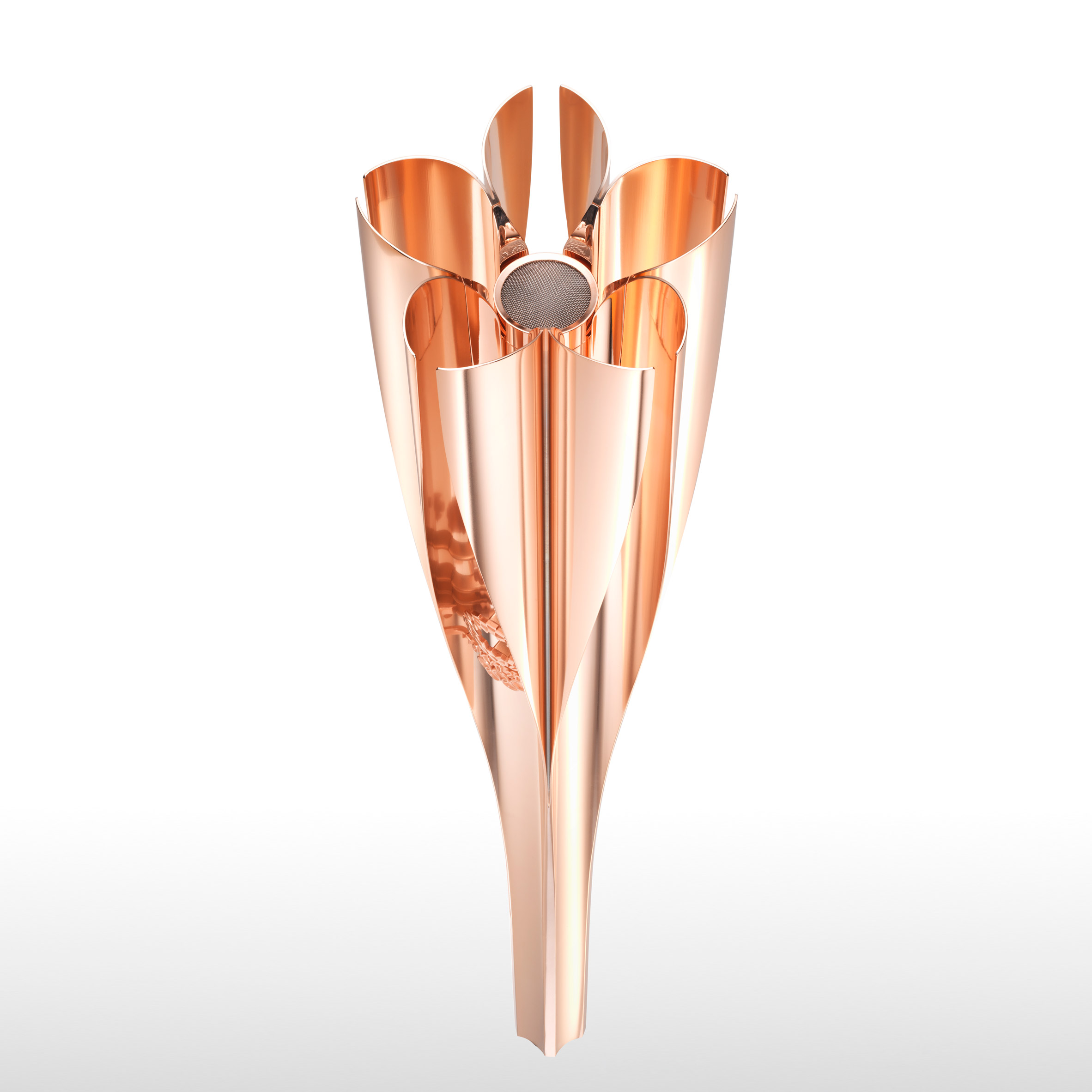
The aluminium for Yoshioka's torch comes from construction waste from temporary housing used in the aftermath of the Great East Japan earthquake and tsunami in 2011.
Yoshioka worked with children living in the affected area at the start of the process to draw cherry blossoms, which ultimately gave him the idea for the torch's simple shape.
The torch relay traditionally opens the games and will see athletes and citizens run in relay to the National Stadium in Tokyo, designed by Kengo Kuma.
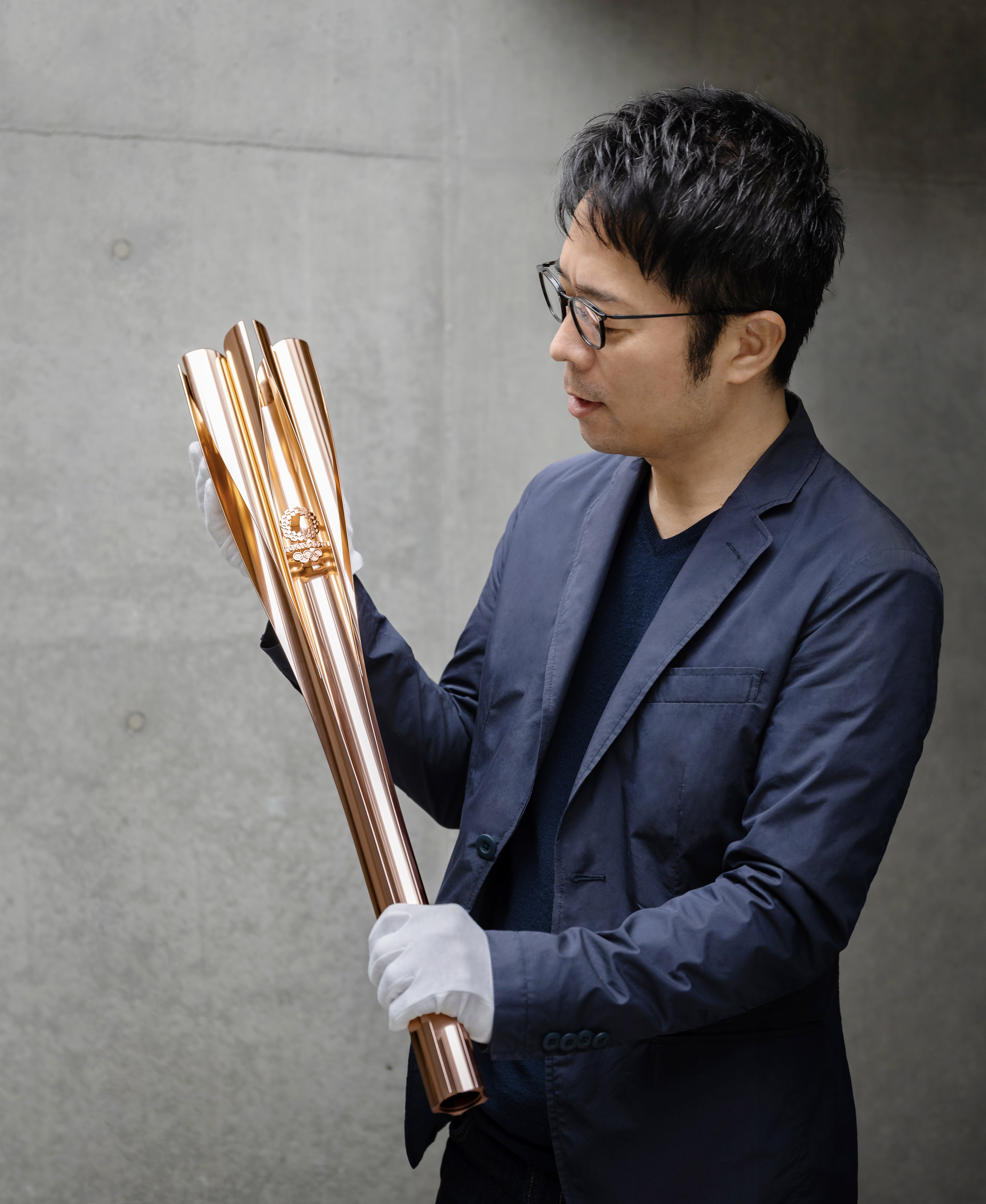
"The polyhedral shape of a cherry blossom reflects sunlight from different angles when the torchbearers are running with it," said Yoshioka. "We hope that each torchbearer would shine with a sparkle in their hand, and the torch relay would be memorable for everyone."
Yoshioka told Dezeen that he began work on the torch as soon as the Tokyo Olympics were announced, even before a competition for the project was launched.
"No one at that moment knew if there would ever be a competition of the Olympic Torch design, but because an idea bubbled up inside me and I was curious to see it in life, I couldn't help but to get rolling with it," he said.
"Even if my design was rejected, I think I didn't lose my passion for realising it."
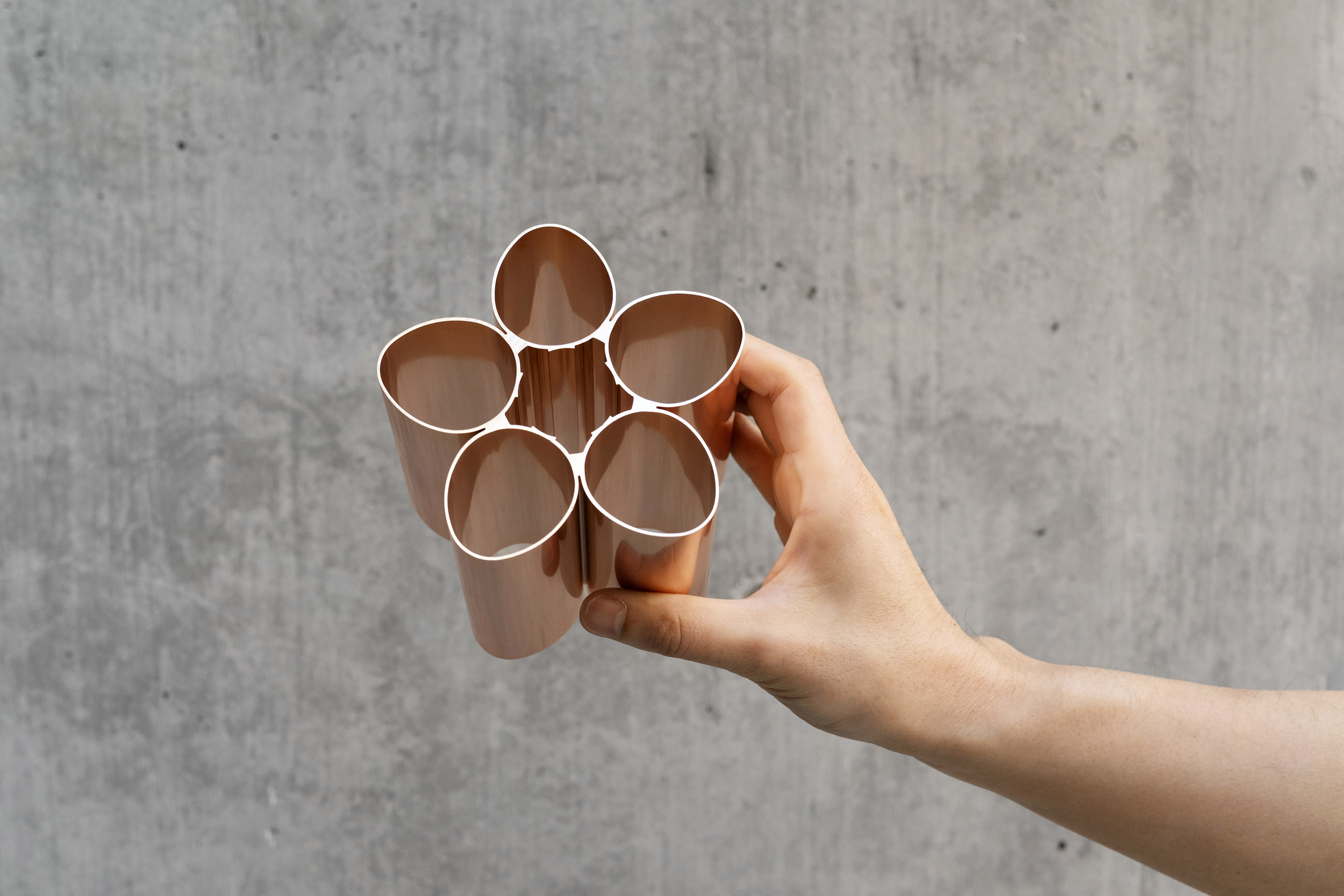
The designer told Dezeen that Barber & Osgerby's London 2012 Olympic torch is "as outstanding design that would go down in history" but revealed that he "wanted to create a torch that is totally different from theirs".
He intends that the design will open up visitors to games' eyes to the broad range of Japanese craft and industry, as well as representing "the kindness and sincerity of the Japanese".
"What I want to show in my work is not some keywords that make you imagine a stereotypical Japan," said Yoshioka.
"Rather than that, I want to reflect the perception of Japanese tradition that's in the innermost part of Japanese people."
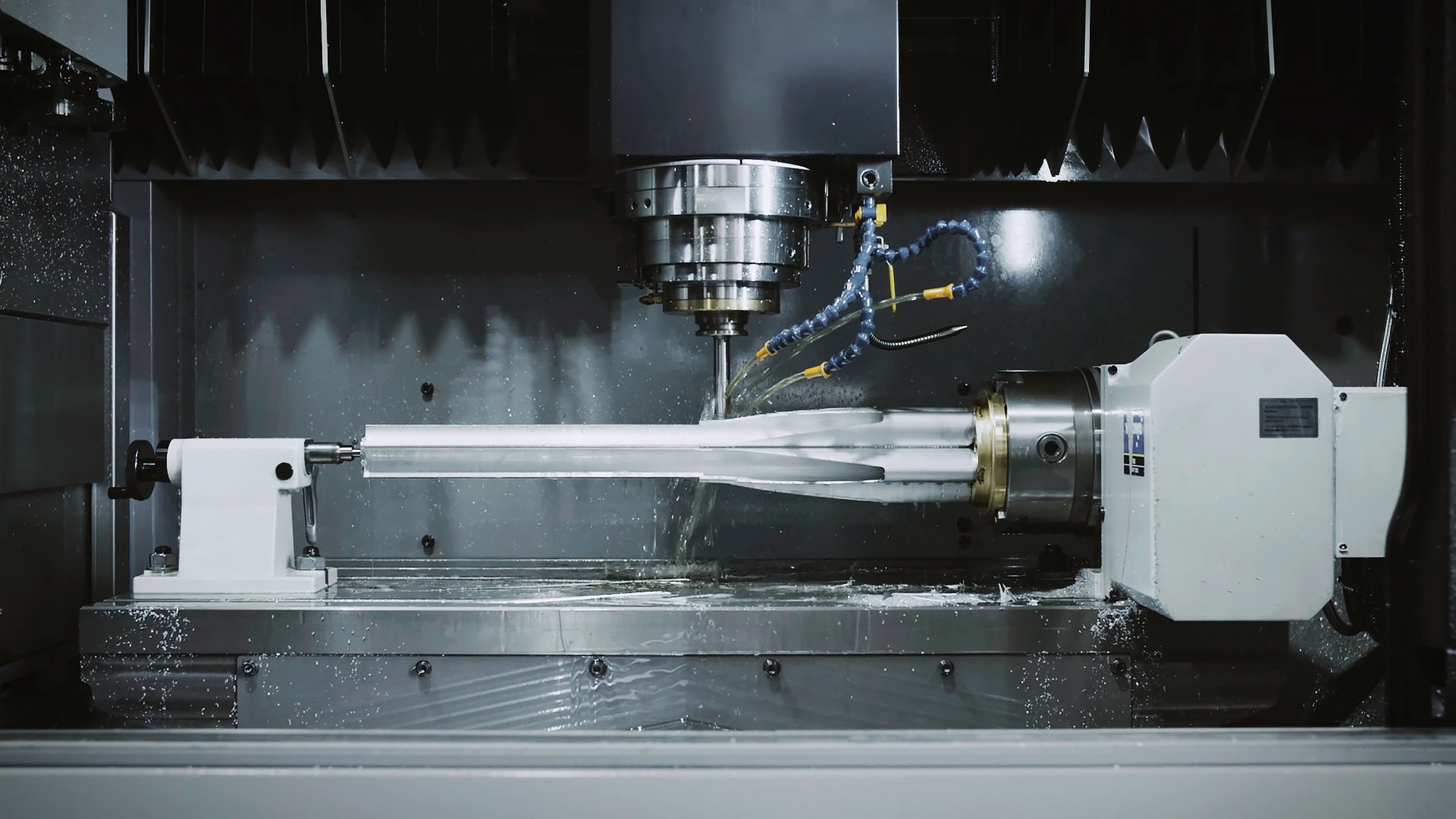
Yoshioka hopes the games may be a time for people to reflect on their consumption and think carefully about what we need.
"The most important thing we have to have in our mind when designing is not to create a new product, but to create something that brings a better society," the designer said.
"We started to put excessive value on convenience and luxury. I think this is what disturbed the balance of this planet. I want to create a design that's beyond being functional, a design demanded from the society," he continued.
"I think the design must be done for the society rather than the economy where they produce and consume mass number of goods. A designer is a creator, but I think it's also important for us to evaluate what not to make."
The post Tokujin Yoshioka reveals new photographs of Tokyo 2020 torch appeared first on Dezeen.
from Dezeen https://ift.tt/38lg2g4

No comments:
Post a Comment